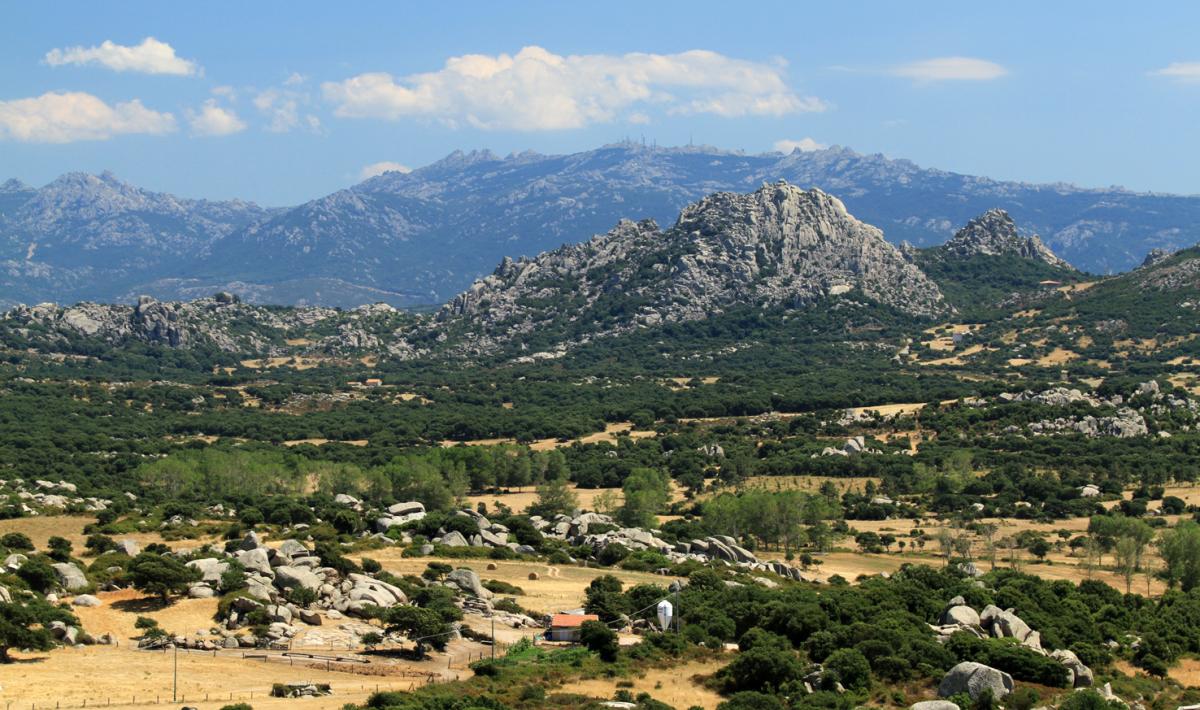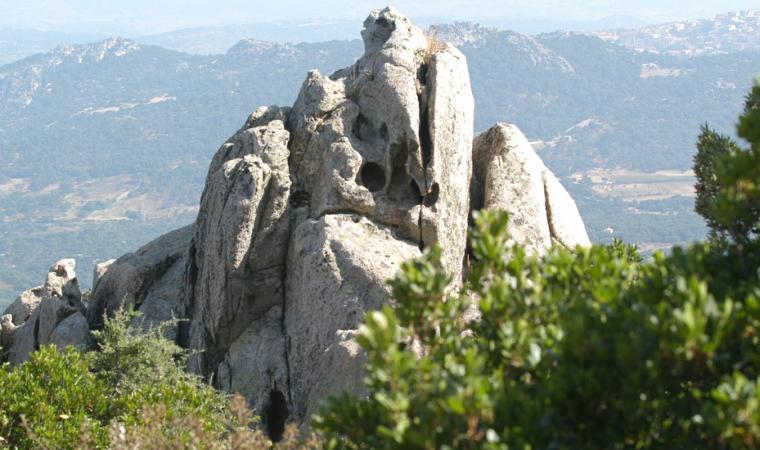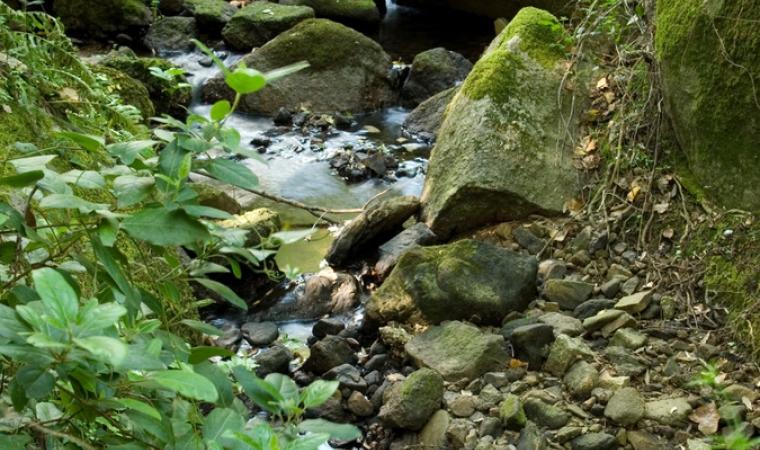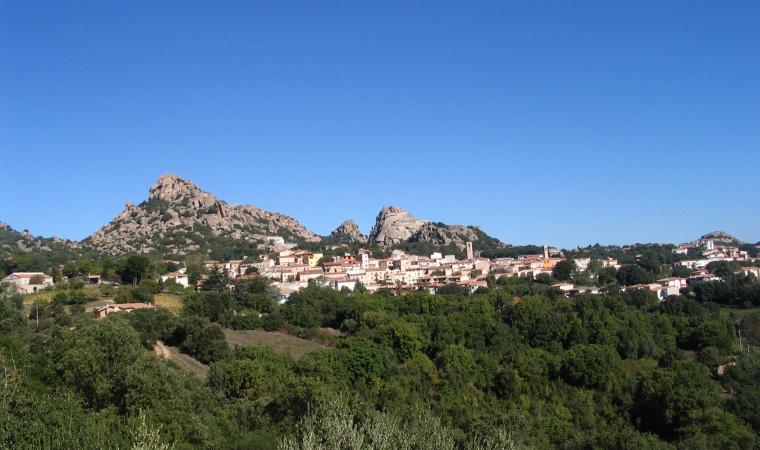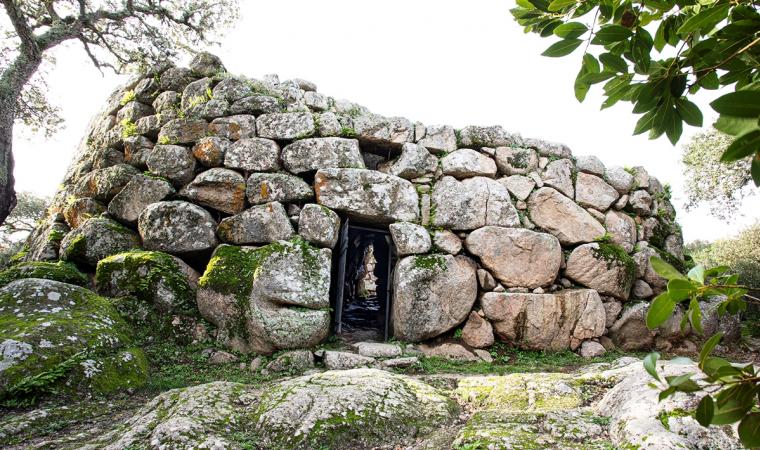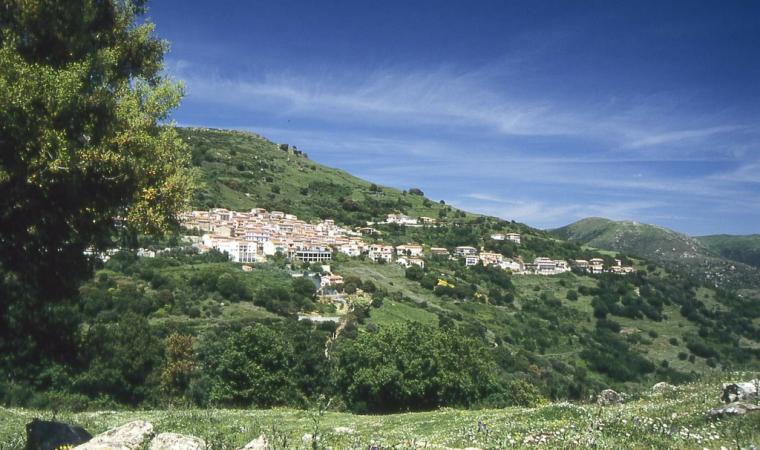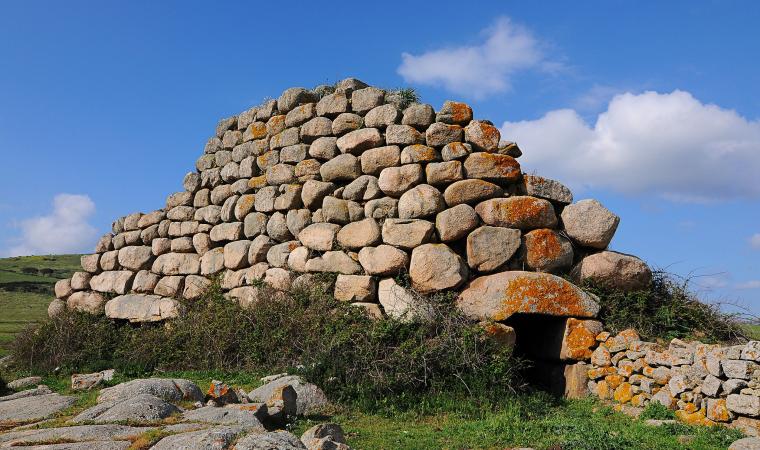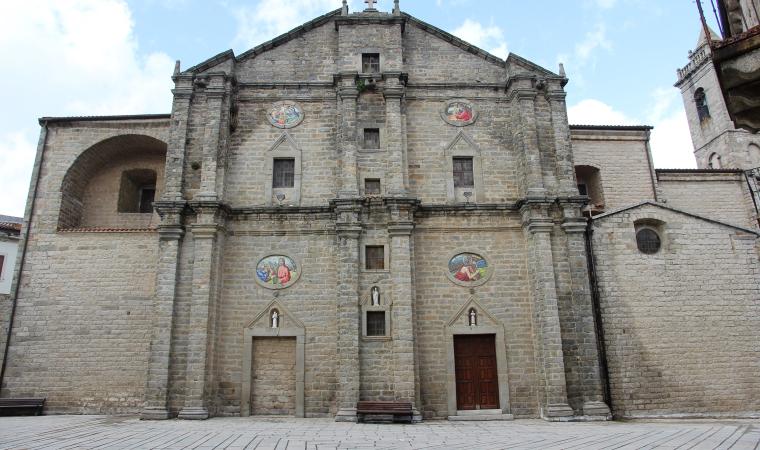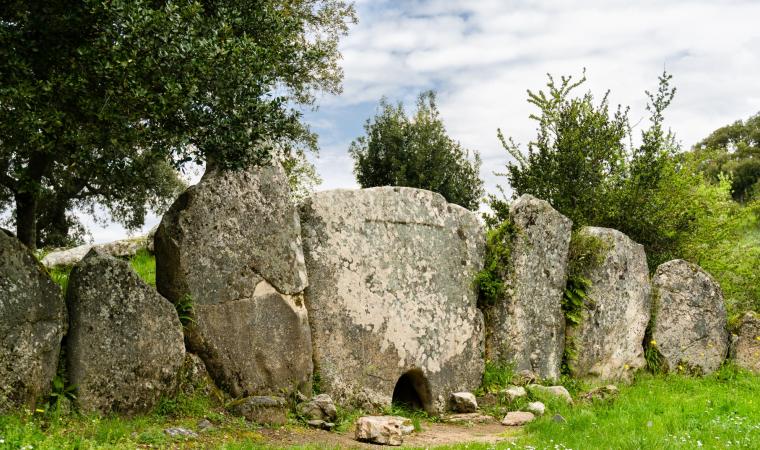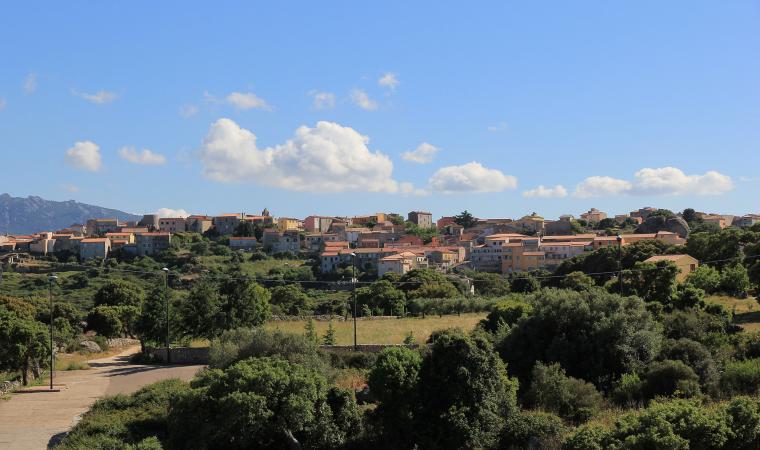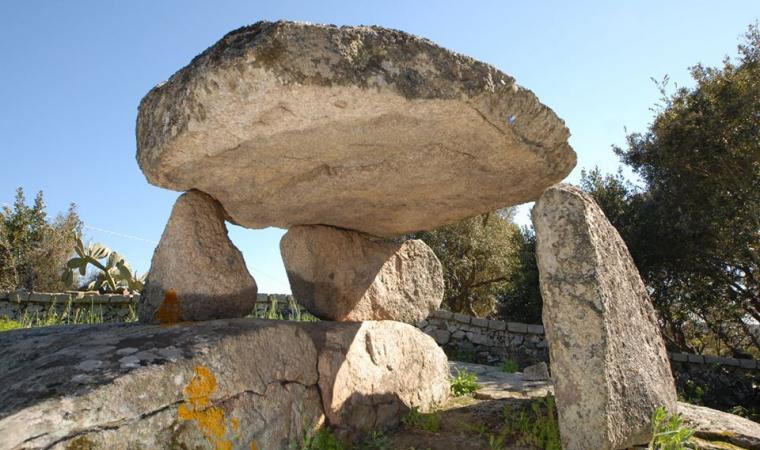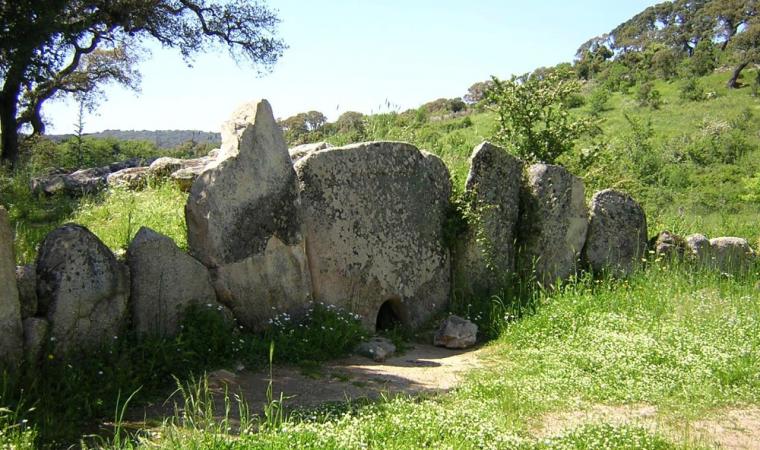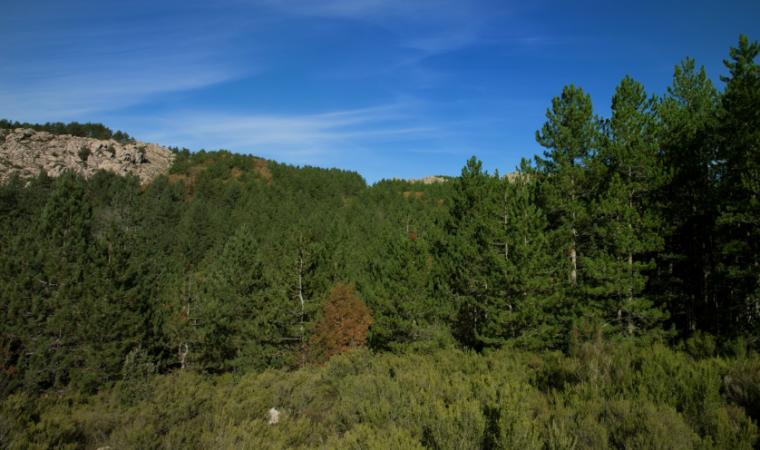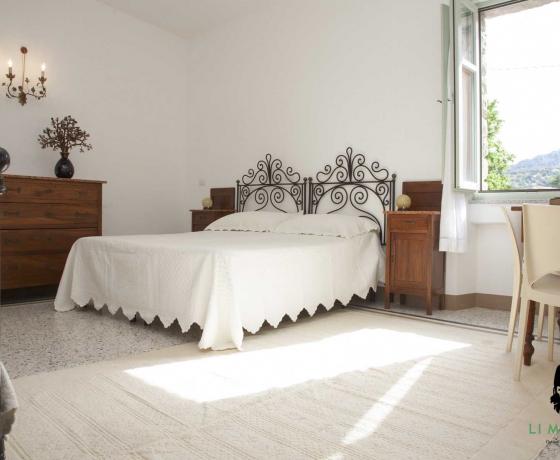The ‘father’ of Sardinian archaeology Giovanni Lilliu thought they looked like the “debris of giants destroyed by an avenging god from the aiguilles of the mountains up above and rolled down to the plain below, where they have been lying for thousands of years”. In fact, the granite outcrops that populate the Piana dei Grandi Sassi (Plain of the Big Stones), in the locality Li Parisi, on the border of the territory of Aggius with that of Trinità d’Agultu and Vignola, give the impression of having ended up there who knows how and scattered in a disorderly manner throughout the valley. When the plain is before you, you will understand the origin of its second name, ‘Valle della Luna’ (Valley of the Moon), not to be confused with the plain of the same name by the sea where Cala Grande opens up, in Santa Teresa Gallura. The white rocks have soft, uneven shapes, thanks to the erosion of rain and wind, creating the effect of a lunar landscape.

